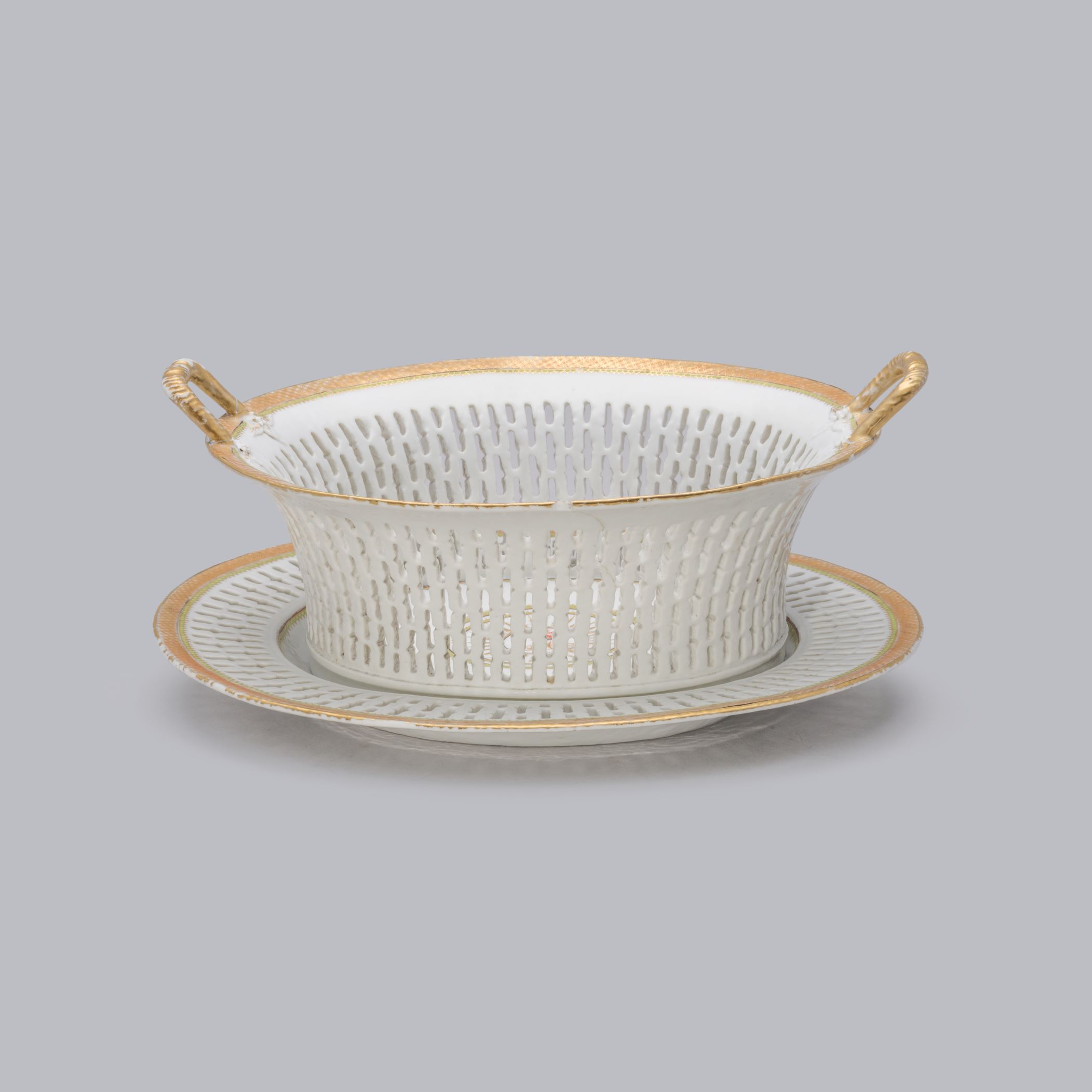
Basket and Stand [Ch227]
Jingdezhen, Jiangxi Province; Qing Dynasty, late Qianlong period, 1790s
Porcelain with a white glaze and gilt and enamelled decoration (stand L. 28 cm, basket L. 24 cm)
This basket and stand are part of a large dinner service ordered by John Goodall Canning (1756-1804) and are adorned with his armorial device and initials. Canning was an official of the British East India Company. He arrived in India in 1789 as Captain of the Nonsuch and was appointed Superintendent at Bombay. His plans to return home and marry the following year were interrupted by the outbreak of the Third Anglo-Mysore War in 1790. Canning remained in India and became Deputy Master Attendant at Calcutta. It was not until 1804 that he eventually left for England. He died on the journey and was buried at sea.
Canning’s service was probably ordered in 1789 or 1790 in anticipation of his marriage. It originally consisted of over five hundred pieces. The surviving items are two baskets and stands, twelve dinner plates, one soup plate, thirteen side plates 7.5 inches in diameter, two side plates 6 inches in diameter, one oblong dish and cover, one cover, two butter dishes and stands, one circular tureen and cover, and a two-handled cup and saucer. Many similar sets of armorial porcelain were made in eighteenth-century China for European clients. They were usually commissioned in Canton (Guangzhou), where East India Company ships called several times each year. The enamelling was done by local artisans onto a series of porcelain forms obtained from the factories at Jingdezhen.
Following Canning’s death, the service was inherited by his sister, Bridget Canning, later the wife of John Bawtree of Wivenhoe (1762-1824). It then passed to Bawtree’s son from his first marriage to Jane Ram (d. 1812) also John (1799-1873), and thence to his daughter Sarah Jane Bawtree (1824-1899), wife of Charles Henry Hawkins (1818-1898), and thence to their daughter Rose Hawkins (1859-1932), wife of Woodforde George du Boulay (1848-1923). Three of Woodforde George’s grandchildren – Hugh, Anthony and Roger – were educated at Winchester.
Provenance: Commissioned by John Goodall Canning (1756-1804), thence by descent to Anthony du Boulay. Accepted in lieu of Inheritance tax by HM Government from the estate of Anthony du Boulay in 2024 and allocated to the Winchester College Treasury Museum.
Location: Not on display